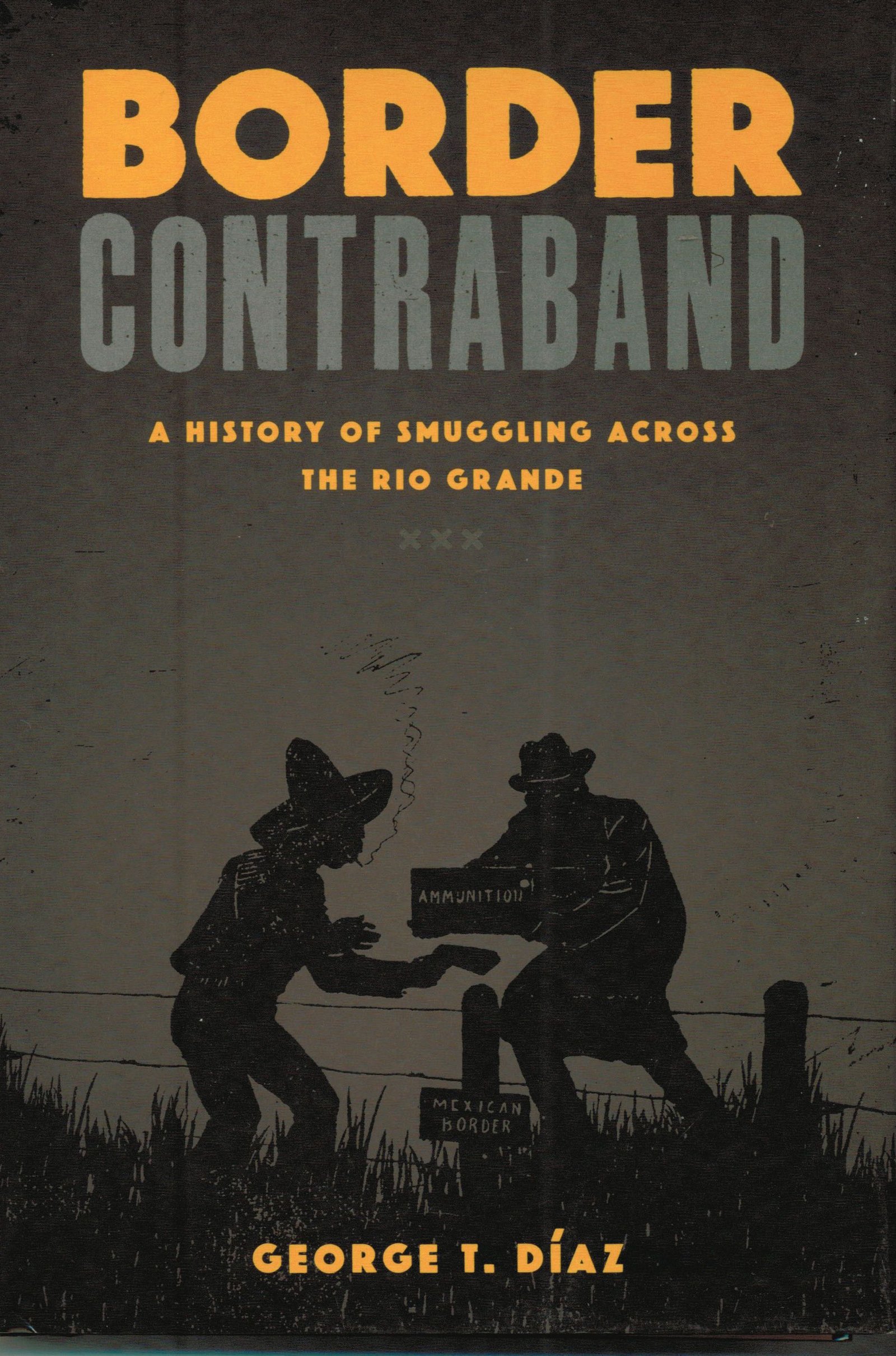TO MY READERS: HOW TO USE THE BLOG
Click Here

Border Contraband: A History of Smuggling Across the Rio Grande By George T. Díaz (Austin: University of Texas Press, 2015, 228 pages, maps, illustrations, notes, bibliography, index, ISBN 978-0-292-76106-3, hardcover edition $45.00.)
Professor George T. Díaz of Sam Houston State University offers a well researched historical study of smuggling along the Texas-Mexican border. The work focuses on Laredo, Texas as well as its Mexican sister city across the Rio Grande, Nuevo Laredo. The author points to the importance of the two Laredos with Nuevo Laredo being the third largest port in Mexico and Laredo, Texas the number one inland entry port on the U.S.-Mexican border. The vast Pan American Highway system runs through both ports and Laredo, Texas today is situated on the southern end of Interstate 35. Since 1882 Laredo, Texas has been linked by railroad service making its location ideal for anyone, including smugglers, who wish to travel throughout the United States or Latin America. Díaz did well choosing this location for his research.
Smuggling on the Texas border is a worthy historical topic but one not previously given a great deal of attention largely because of the illegality of the subject. Also, it is one not easily researched because of this unlawfulness. The author breaks his work into three time periods beginning in 1848 with the Treaty of Guadalupe Hidalgo that ended the Mexican-American War and designated the Rio Grande as an international boundary. Professor Díaz details this first period that ends with the outbreak of the Mexican revolution in the first decade of the twentieth century as a time in which both Mexican and U. S. customs enforcement concentrated on the collection of tariffs needed provide essential revenue to both countries. The author points out the attitude of border residents during these years as being a tolerant acceptance of smuggling. This began to change with the coming of the railroads in the 1880’s that spurred population growth particularly on the Texas side. The outbreak of civil war in Mexico in 1910 brought violence with enforcement of arms and ammunition embargos imposed to stop the southward flow of the weapons of war into Mexico from the United States. U.S. Customs agents, once primarily collectors of revenue, found the enforcement of neutrality laws designed to keep illegal arms out of Mexico a very dangerous business.
The author does not ignore abuses during the era of prohibition when Customs agents and Texas Rangers resorted to ambush and murder of armed tequileros (tequila smugglers). By 1928, the two Laraedos became a transit point for drug traffickers who took up the smuggling of opium because it could be easily concealed in automobiles and in various types of shipments. Díaz makes use numerous case studies to illustrate his points. The professor’s research is thorough and innovative. He presents an impressive bibliography of archival and manuscript collections as well as scholarly articles and secondary sources. He also uses Mexican corridos (songs as sources) to broaden the readers understanding. It is a work well done and worthwhile.
Glenn Justice
[ view entry ] ( 4126 views ) | permalink |
<<First <Back | 3 | 4 | 5 | 6 | 7 | 8 | 9 | 10 | 11 | 12 | Next> Last>>